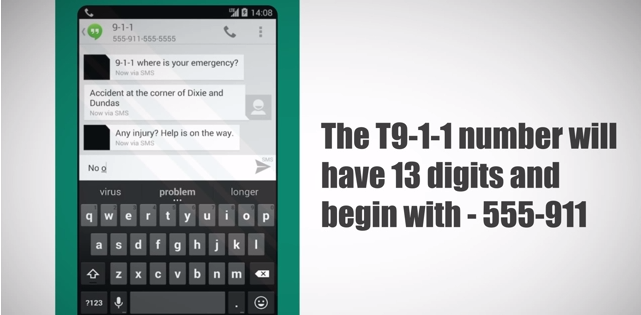
Members of the Canadian Wireless Telecommunications Association (CWTA) have been testing ability for those with hearing or speech impairments to text 911 during an emergency. A trial was put in place back in 2012 and proved to be successful, so the CRTC informed the carriers to make several network upgrades by January 24th to bring this to life.
Today, the CWTA declared that the carriers have complied and completed all the required network upgrades to implement T9-1-1, but it’s the 9-1-1 call centres that are failing to activate this. According to the press release, “At this time, the T9-1-1 service is not available in any region of the country. The service will be implemented by 9-1-1 call centres in different municipalities or regions at different time periods over the next several years.”
Bernard Lord, CWTA President and CEO, said “Extending 9-1-1 services through text messaging is an important step in the evolution of using technology to keep all Canadians safe. Canada’s wireless industry looks forward to working with the public safety community in rolling out this critical service across the country.”
For now it’s a waiting game until the Emergency Services catches up and updates their systems. In order to eventually make a T9-1-1, which will be a free service, users must register their number with your wireless carrier and have a compatible device. Then in case of an emergency, you’ll first have to initiate a voice call into 9-1-1 (acts as a conduit to the 9-1-1 operator), then wait for 9-1-1 operator to dispatch a text to you, which apparently can take up to 2-minutes, and then engage in texting your emergency. The video below gives a good example of how it’ll all work.
T9-1-1 will be available at all major carriers and their sub-brands.
Source: CWTA
MobileSyrup may earn a commission from purchases made via our links, which helps fund the journalism we provide free on our website. These links do not influence our editorial content. Support us here.


